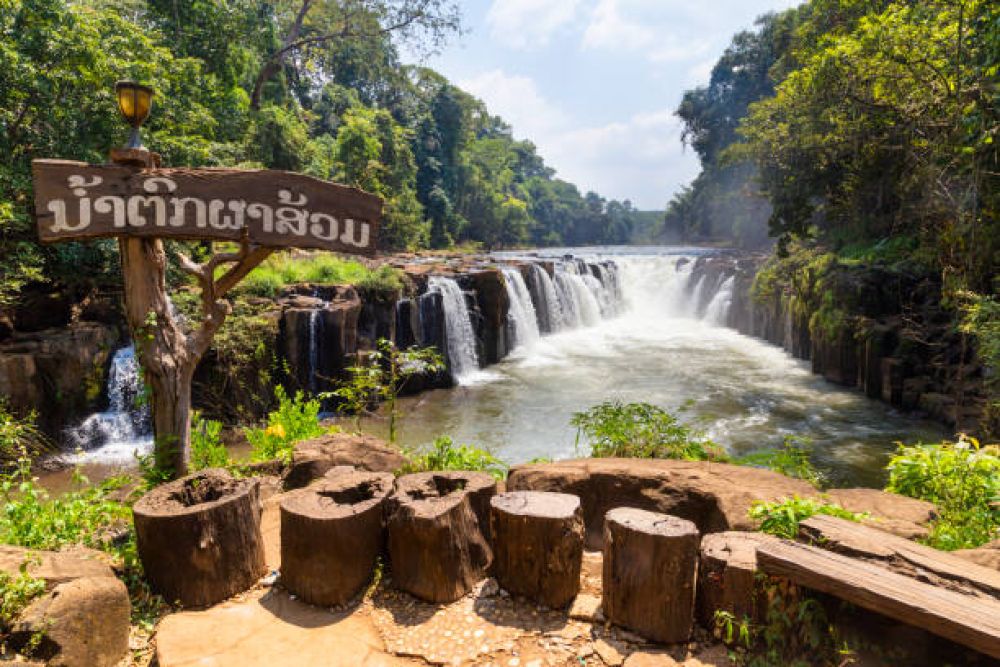

Nestled within the lush landscapes of Southern Laos, Tad Pha Suam Waterfall stands as a picturesque destination that has attracted adventurers and peace seekers alike. This cascading feature, located in the Champasak Province, has been part of the region's natural allure for centuries but has seen significant development as a tourist site over the past few decades.
The history of tourism at Tad Pha Suam Waterfall is relatively young compared to other historical landmarks in Laos, as the country only opened up to international visitors in the 1990s after decades of isolation. Originally, travelers to Champasak were drawn by the UNESCO World Heritage Site of Wat Phou, an ancient Khmer temple complex, and the discovery of Tad Pha Suam and its surrounding areas was a serendipitous by-product of the increasing tourist inflow.
As word of its serene beauty spread, the waterfall began to gather more interest, leading to the development of better infrastructure around the site, including pathways and viewing platforms to accommodate curious visitors. The local government, recognizing the potential of Tad Pha Suam as a tourist attraction, invested in sustainable developments, ensuring the protection of its natural beauty while providing access to tourists.
In recent years, Tad Pha Suam has seen further evolution as a tourist attraction. A cultural village, Ban Pha Suam, is located nearby, offering insights into the traditional lifestyles of the Lao Loum people. Here, visitors can experience local customs, traditional houses, and enjoy cultural performances, adding a rich cultural experience to the natural splendor of the waterfall.
The latest trends in tourism at Tad Pha Suam Waterfall reflect a global shift towards eco-tourism and sustainable travel. Tourists are increasingly seeking experiences that are environmentally friendly and that contribute to the conservation of the site. Activities such as guided nature walks, bird watching, and educational tours about local flora and fauna have become popular, aligning with this trend.
Accommodations in the Champasak region also cater to this eco-conscious wave, with a number of eco-lodges and community-run guesthouses that emphasize minimizing environmental impact and supporting the local economy. These accommodations provide a unique chance for visitors to stay in harmony with nature while exploring Tad Pha Suam and the surrounding attractions.
Tad Pha Suam Waterfall continues to be a highlight in the Champasak region's tourism portfolio, encapsulating the essence of Laos' stunning natural beauty and warmth of its cultural heritage. With sustainable tourism practices in place, it promises to remain a cherished destination for years to come, offering a tranquil haven for nature lovers and an insightful cultural journey into the heart of Lao tradition.
As Laos develops its tourism industry, efforts are being made to maintain the balance between development and preservation, ensuring that the history and natural allure of places like Tad Pha Suam Waterfall will be protected for future generations to enjoy.